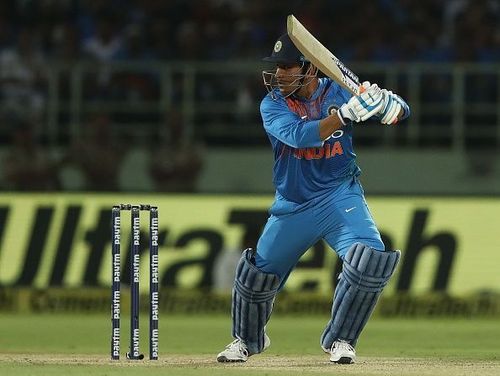
India vs Australia 2019, 1st T20I: MS Dhoni re-ignites discussions on 'farming the strike'

It’s always a tough time when a batsman plays with tail-enders. You never know when the latter will get out, so any ball which is floated above his eye line, he will try to hit out of the stadium and in the process, could get out.
This is exactly why, when playing with a tail-ender, a top order batsman tries to keep maximum strike with himself and only takes a run on the fourth or fifth delivery of every over. This way, the tail-ender is exposed for only one or two balls per over.
This strategy is widespread in Test matches, seen a little bit in ODIs, and very rare in T20s. Test matches are about playing out time and survival, and hence farming the strike works well best in this format. In ODIs as well, if there is a top order batting collapse, the strategy of farming the strike helps. But that is still a questionable strategy and may not be the most efficient, as runs matter in ODIs and not just survival.
In T20, farming the strike is rare or even non-existent.
For a batsman to farm the strike, he must have tremendous self-confidence and belief that he will be able to maximize on the deliveries that he connects with, and compensates for the dot balls played. MS Dhoni is a master of farming the strike, be it with tail-enders or even with recognized batsman who have just come to the crease. But farming the strike is a function of the match situation.
In the T20 against Australia today, Dhoni was indeed farming the strike. India were in a crisis at 115/7 after 18 overs; Umesh Yadav batting at #8, meant that the tail was very long. So Dhoni took the call of farming the strike in order to not expose Yuzvendra Chahal.
This was a questionable decision, especially considering that India needed every possible run at that stage. In the 8 balls from the 19th to the 20th over, there were a total of 7 dot balls, and just one six hit.
One felt that even if Dhoni had taken singles and allowed Chahal to take the strike, there was a possibility that at least singles could have been taken.
The strategy didn’t work today, maybe because the pitch was on the slower side. But you have to commend MSD for the sheer belief and confidence he has in his abilities.
To farm the strike in the last two overs of a T20, especially when the team hasn’t got too much on the board, puts a lot of pressure on himself. And in his defense, the pitch could have slowed down towards the end, making run-scoring even tougher with the older ball.
That said, questions will always be asked about whether farming the strike in the death overs of a potentially low scoring game is the best way to go about things.